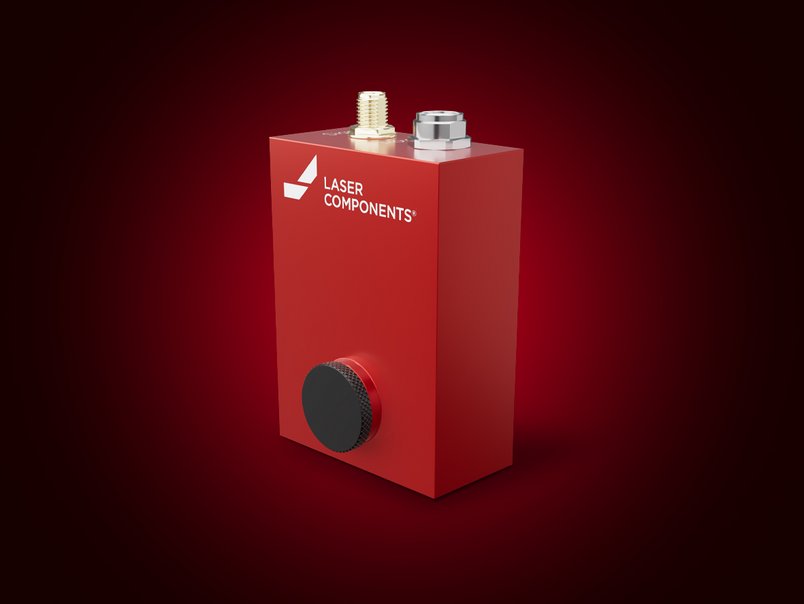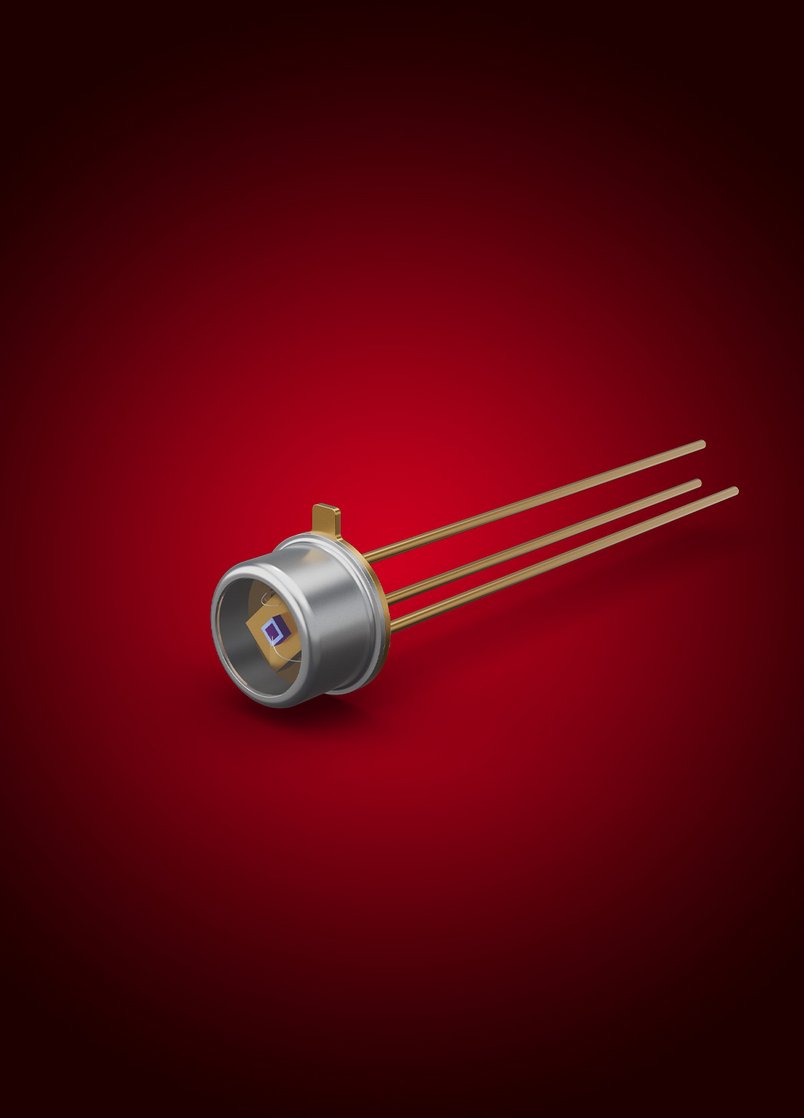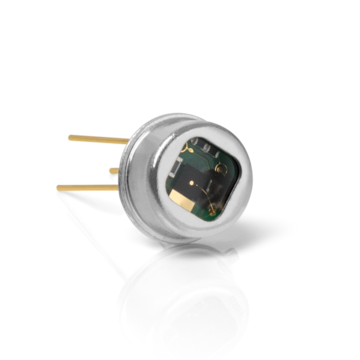Single-channel IR Detector
This product line uses LiTaO3 as the chip material. We offer a broad range of active sizes and packages. Our smallest package is a TO-46 and our largest standard chip size is 3.0 x 3.0 mm². We also offer versions for all common methods of driving pyroelectric detectors. These detectors can be tailored to applications by integrating bandpass filters or broadband windows. For details, please see the separate »Filter and Window Selection Sheet«.
Current Mode Detectors
Currently, the op-amp-based current mode (CM) is only used by a minority of users; however, this minority is rapidly growing. We strongly recommend using this method of driving, especially for new developments.
In our experience, customers profit from the following advantages: There is a relatively large signal on top of a small offset. In addition, this offset is more consistent across a wider temperature range.
This series has the following designation:
L11 for detectors without temperature fluctuation compensation (TFC) and L21 for those with TFC. In general, L21 series components have a higher performance ratio than those of the L11 series.
Voltage Mode Pyroelectric Detectors
An ideal choice for Fourier Transform Infrared (FTIR) spectroscopy, the L31/41 Series can reach typical D* (detectivity) of 9 X 108 at 10 Hz. With an integrated JFET these detectors operate within a spectral range that covers the ultraviolet (UV) up to long wave infrared (LWIR). A significant benefit with the L31/41 Series is the optical power dynamic range, because voltage mode (VM) detectors are highly sensitive, yet do not saturate with increasing optical power.
The VM L31/41 Series use a 2.0 mm² chip size, that comes in low and high-speed variants. This latest addition to the single channel pyroelectric detectors is ideal for applications such as, non-dispersive infrared spectroscopy, THz detection, gas analysis, flame detection and control, moisture monitoring, and non-contact temperature measurement. Whereas the CM detectors offer higher responsivity, the new L31/41 Series VM detectors can significantly lower noise density at 0.13 μV/√Hz. Additionally, the L31/41 Series has a Noise Equivalent Power (NEP) as low as 3.4 × 10−10 W/√Hz that can enable the detection of very weak signals.
Our IR Detectors
Panchromatic, photoconductive and thermal detectors
InGaAs PIN Photodiodes
Modern InGaAs PIN photodiodes are panchromatic and convert broadband light to photocurrents in the Visible-NIR range. Concretely speaking, this means a sensitivity range from 500 nm to 1700 nm for regular InGaAs and – in increments – up to 2600 nm for extended InGaAs.
PbS and PbSe Detectors
PbS is a standard Short-Wave Infrared (SWIR) semiconductor detector (1 - 3.3 µm) whereas PbSe is used in the Mid-Wave Infrared (MWIR) range (1 - 4.7 µm when uncooled; up to 5.2 µm when cooled). Our PbS and PbSe detectors are photoconductive; the detector resistance is reduced during illumination. The crystal structure is polycrystalline and is produced via chemical deposition.
Pyroelectric IR Detectors
A pyroelectric IR detector is a thermal detector in that it responds to the change in heat (IR) absorbed on its surface. Thermal detectors are polychromatic with a very wide spectral bandwidth.
The nature of the pyroelectric effect is that in a highly-ordered crystal (or ceramic), a temperature change in the element causes its atoms to move slightly out of position. This rearranges its electrical charge, which is measured in the electrodes on its surface.
The pyroelectric effect is found in many materials. The most commonly-used materials are deuterated lanthanum α alanine-doped triglycine sulfate (DLaTGS) and lithium tantalate (LTO).

What is Your Challenge?
Beyond Borders


LASER COMPONENTS Germany GmbH
News & Events
from the infrared world




















